
Tata’s JTP Duo Gets More Kit And A Price Hike
- Aug 14, 2019
- Views : 2261

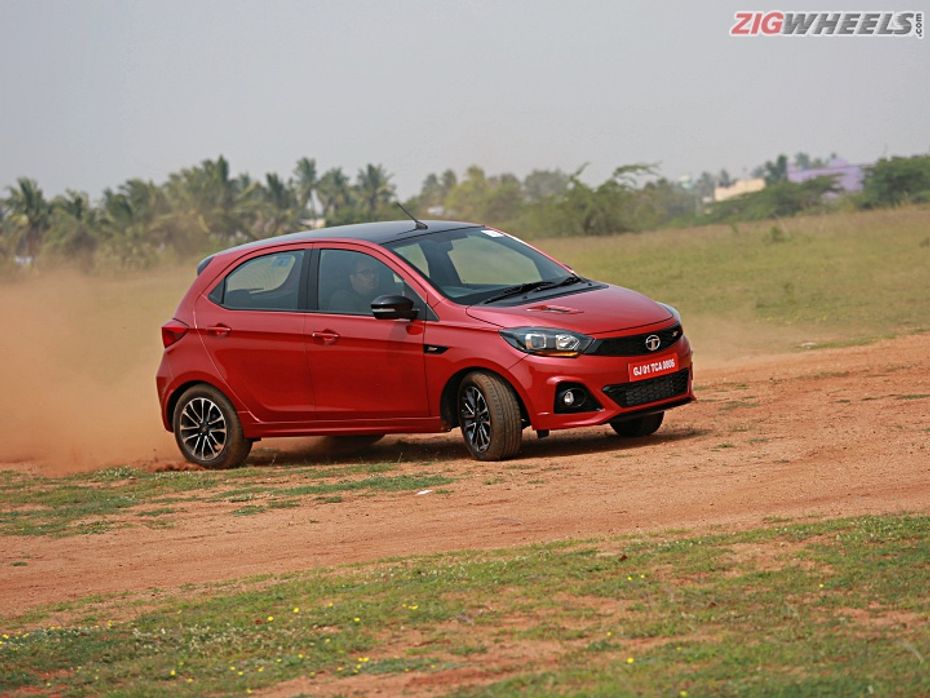
A sharp left hurtles towards the nose of the car as I bury my right foot even further into the metal floor. A throaty exhaust resonates inside the relatively small cabin. Braking point approaching, I lift off the accelerator and the engine hisses softly as the wastegates open. I can feel the transmission whirring a foot and a half under my left arm as I downshift. The mechanical clunk is the sound of success. Final step, a blip of the throttle and turn of the chunky steering wheel and it simply tucks into the corner. Bury the accelerator on the exit and the wheelspin tells you, you can go a bit easy.
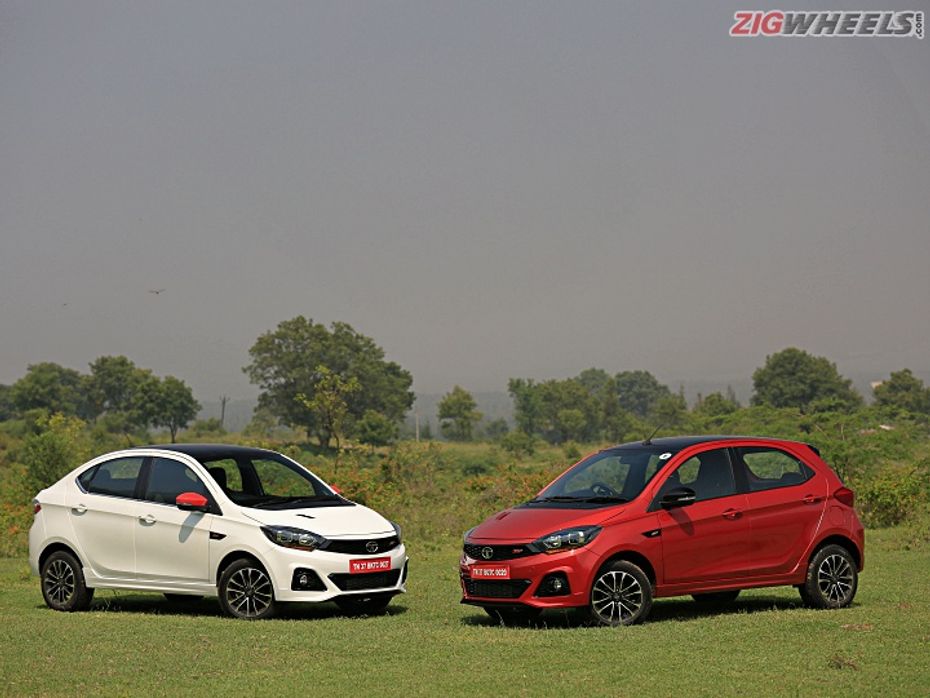
You’d be hard pressed to believe that the car we’re talking about is neither a Jaguar nor a Porsche, but in fact, a Tata. The Tata Tiago JTP, to be precise. With the JTP twins, Tata, along with Jayem Performance, is attempting to resuscitate the affordable performance culture that existed when cars like the Esteem 1.3, Baleno 1.6 and the Ikon 1.6 roamed our roads, setting many a heart a flutter. The kitna-deti-hai brigade pushed the enthusiasts’ cars to near extinction. Finally, there’s hope and holy mother of god is it fun.
Serious business?
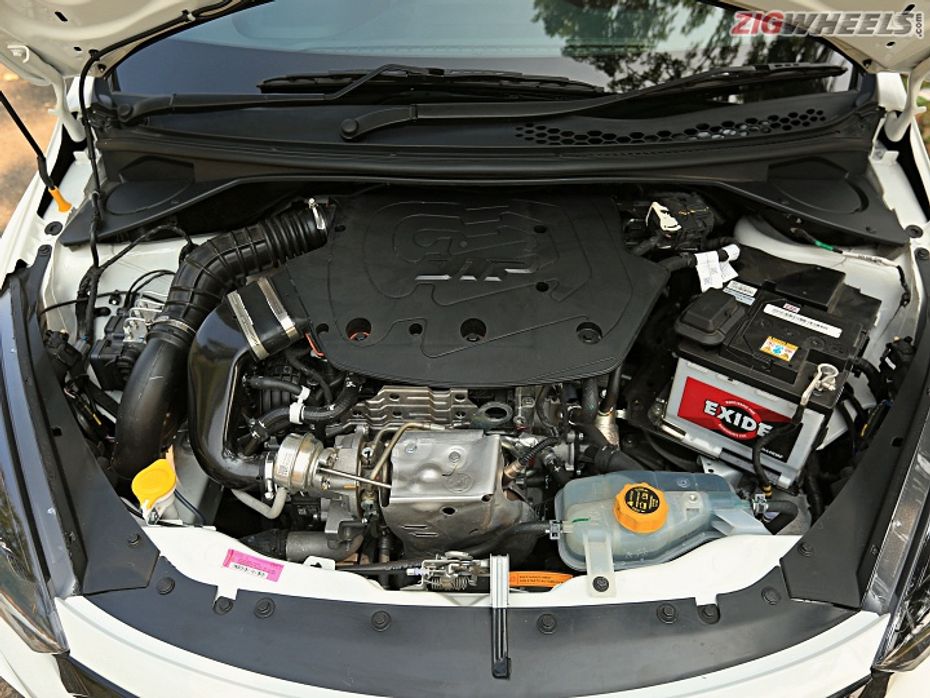
Both the Tiago and Tigor ditch their 1.2-litre naturally aspirated petrol engine in favour of the 1.2 turbocharged petrol engine from the Nexon. And it’s not a mere swap job either. There’s serious black magic at play here.
Engineers at Jayem, one of the most revered tuners and performance parts makers in the country took the Nexon’s powertrain and injected it with a large dose of steroids - the valve timing has been changed, the turbo intercooler is repositioned along with the air intake. The forced induction system has been re-tuned for increased boost, which combined with a lower back pressure exhaust has resulted in a bump up of 4PS over the Nexon. The JTP twins make 114PS of max power, the torque though has been capped at 150Nm.
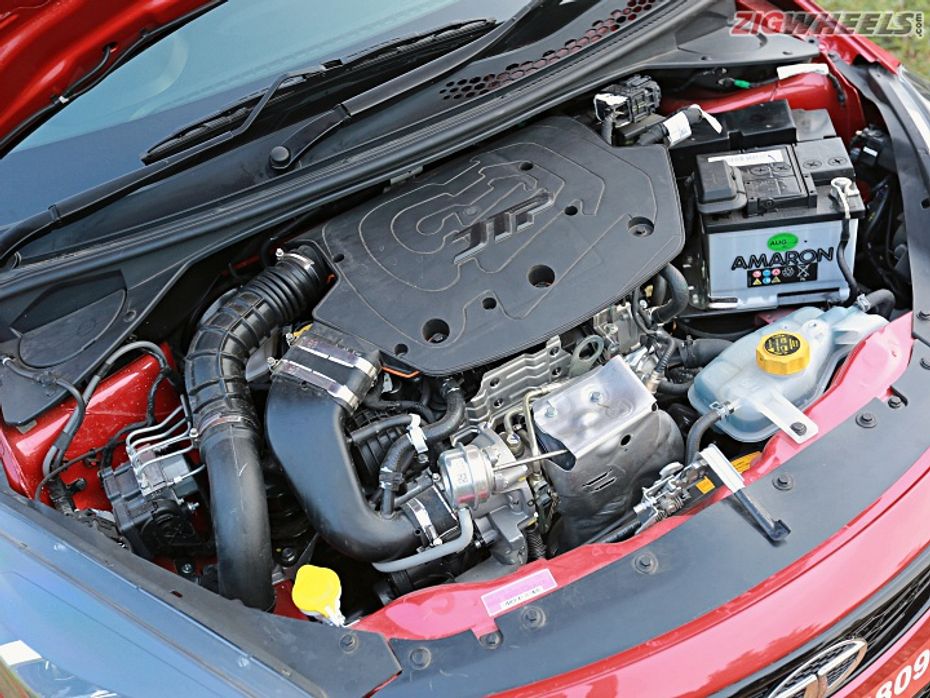
At turnover, it sounds a bit clattery. Even at idle, the exhaust gurgles faintly with a promise of better things to come. Rev it and you hear all sorts of induction and exhaust noises. The whine from the turbocharger complemented by explosions from within the cylinders, a throaty exhaust note fills the cabin as the needle nudges 4000rpm. And moment you lift off, the hiss from the blow off valve and a spit from the exhaust as the boost is dumped is like listening to your favourite riff. The engine is mated to a 5-speed gearbox which has also been retuned for better performance.
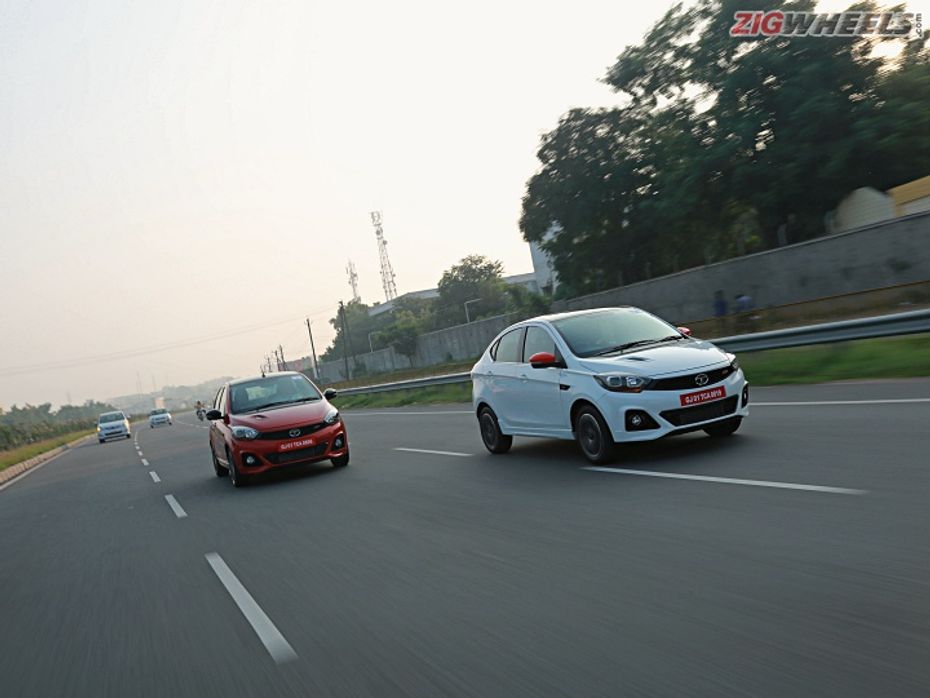
Slot the cars into first and the first thing you notice is the lightness of the clutch. Dial up the revs and both the Tiago and the Tigor take off in a cloud of wheelspin and road dust. The acceleration isn’t blistering but enough to bury your head into the headrest. Second slots with a nostalgic, mechanical thud. And with it comes another bootful of power as the twins dart relentlessly toward the horizon. As the needle soars past the 4000rpm mark, the cars go into Super Saiyan mode with one last push from the engine as the tacho needle turns red. By the time you shift into third, the speedo is already poking at 100kmph. Both cars have similar dash times to 100kmph from standstill, though the Tiago JTP is just a hair faster than the Tigor, thanks mainly to the lower weight.
Despite the borderline manic nature when pushed to the limits, there is no compromise on day to day driveability. The light clutch, a super tall third and the meat of the torque available from 2000rpm ensures that you have enough grunt at all times to make navigating city traffic a breeze and overtaking as easy as breathing.
Got The Looks
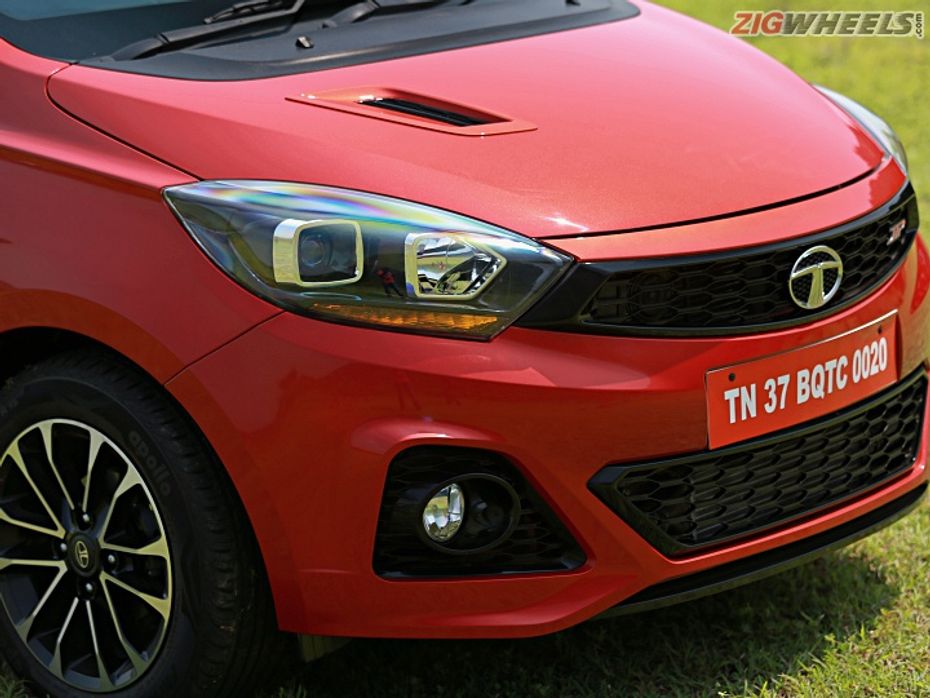
The JTP twins are a sight to behold. And it’s refreshing to know that for one, there is no sign of chrome whatsoever on the cars. All the chrome surfaces have been given the all black treatment. Even the intakes and vents serve a purpose. The apertures in the front help channel the air towards the engine. The singular vent on the bonnet and the vents on either side on the front fenders help with engine heat management.
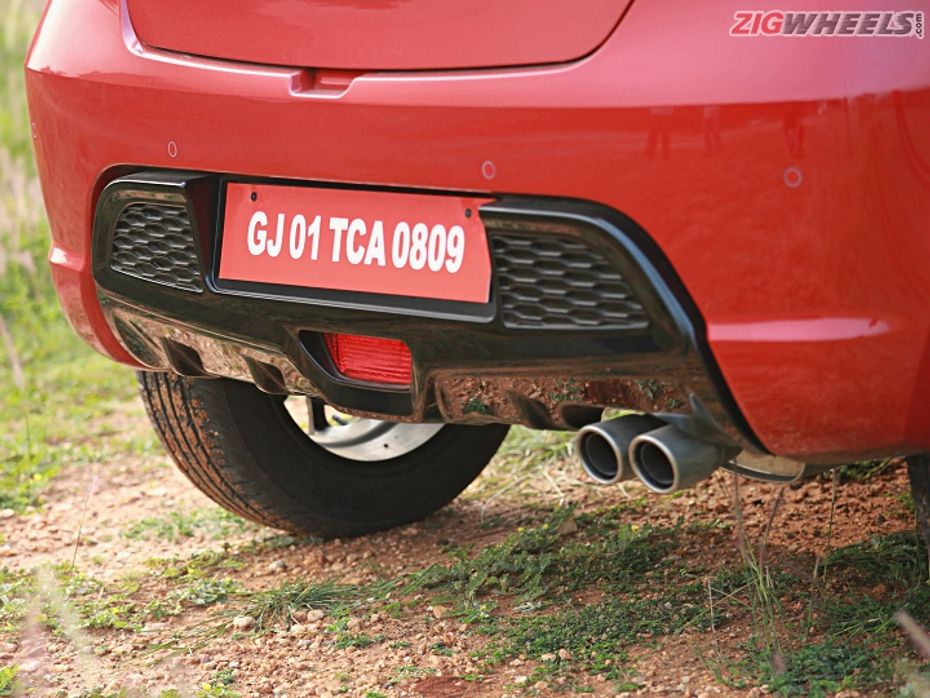
Even the rear diffuser on the Tiago is functional and not just an aesthetic element. Both cars also get projector headlamps with black surrounds from the Tigor XZ+, a first for the Tiago. The Tigor JTP also sports clear-lens taillamps from its top variant. The cars look fantastic with new 15-inch alloys, a blacked out roof and contrasting ORVMs.
Ergonomically speaking
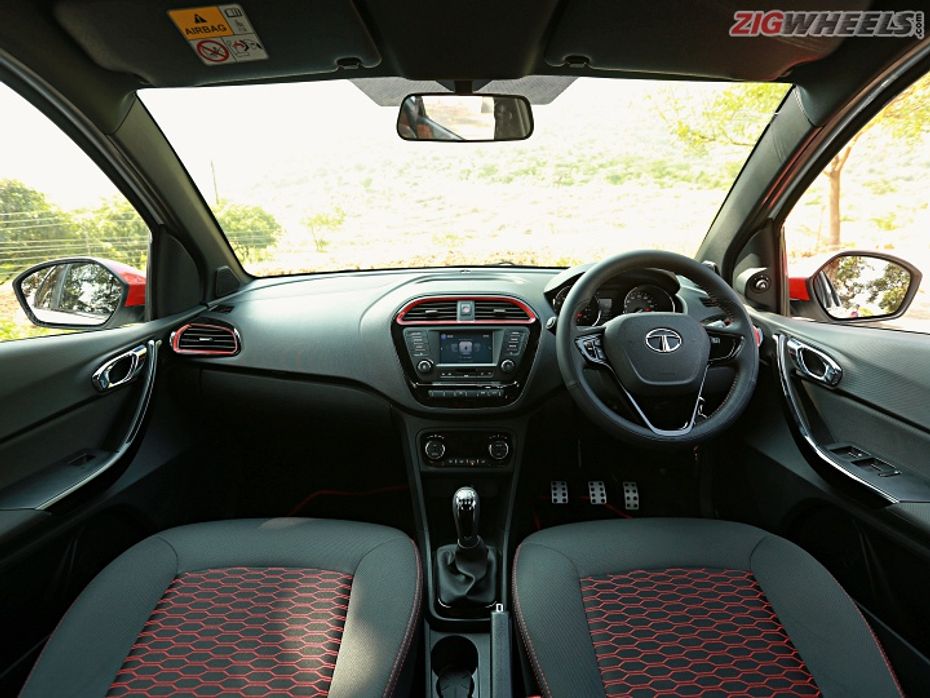
The cabin of the JTP cars is identical to the standard models but is completely different. Which is to say, the layout is the same but the feel is not. The beige dual-tone theme has been ditched in favour of an all-black interior. Aircon vents get sporty bright red accents around them. Seats, though the same as the standard cars, feature red stitching and JTP badging on the back rests. But the biggest change is the steering. It is the most ergonomically sound steering ever to be fitted in a Tata car. The grip is phenomenal - it is of just the right thickness and diameter. In fact, the top half, where the drivers’ hands rest is thicker than the bottom half. And it gets steel pedals too.
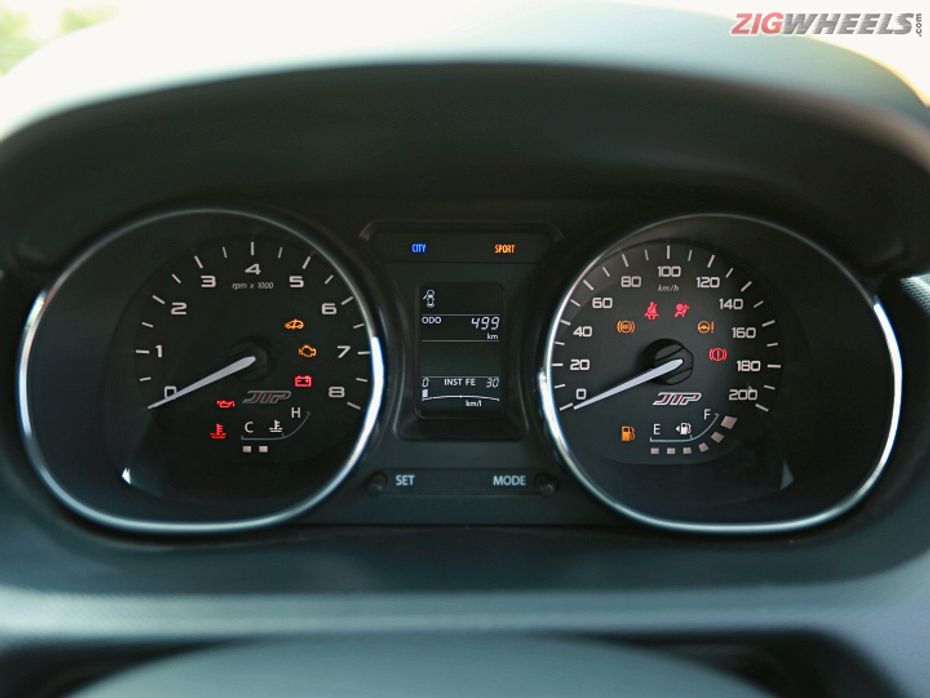
Otherwise, the cabin is identical to the XZ variants of the standard cars in terms of interior space and equipment. Both cars come with a touchscreen infotainment system, but the Tigor also gets rear parking camera and climate control. The Tiago JTP, on the other hand, makes do with rear parking sensors and an analogue AC.
Floating and stinging

When you hand over a project to people who build racecars for a living, you’re sure to get something really special. In the words of J.Anand, MD Jayem Automotive and Head, JTP project, “the JTP twins are not about outright power. The cars are about balance and how they make you feel. They have a certain rawness about them that seems to have gone missing in the past few years. This is JTSV’s (Jayem Tata Special Vehicles) attempt to bring that thrill back.”

Hardware on both cars is bone stock and no different than the standard cars. This has not only helped Tata keep vehicle costs in check, but also negates the problem of parts availability. However, everything has been re-tuned. The suspension damping has been retuned, springs however remain the same. Ride height has been lowered by 4mm only to keep the cars from losing their ability to tackle our legendary road surfaces. Wheels have been upsized to 15-inch ones and now come with 185 section tyres specially developed for JTP twins by Apollo and MRF.
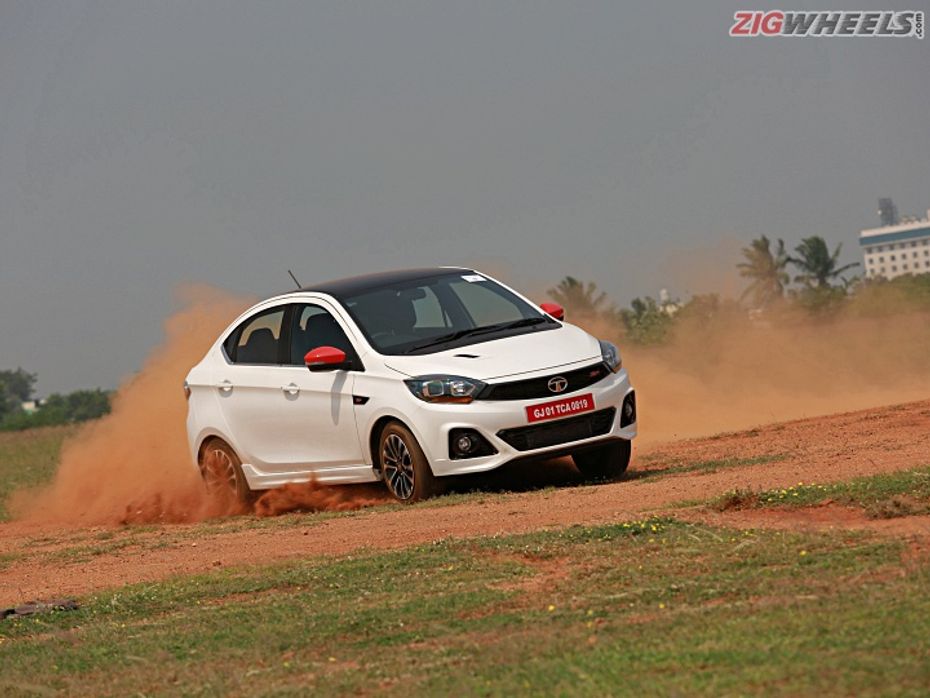
The changes might not seem much, but the difference they make is tremendous. Both cars feel planted at all times. It’s hard to believe that a suspension retune would transform the Tigor from a soft and floaty city car to a sure-footed corner carver. It’s either that or there’s black magic involved.
The setup is unbelievably well balanced. You can feel the increased stiffness as you glide over bumps and undulations on the road. But unlike most stiffer setups, like on the Polo GT TSI, the lateral movement on low speed bumps is barely noticeable. The ride is comfortable, poised, and the steering too feels light. And both cars behave the way you would expect a great city car to behave.
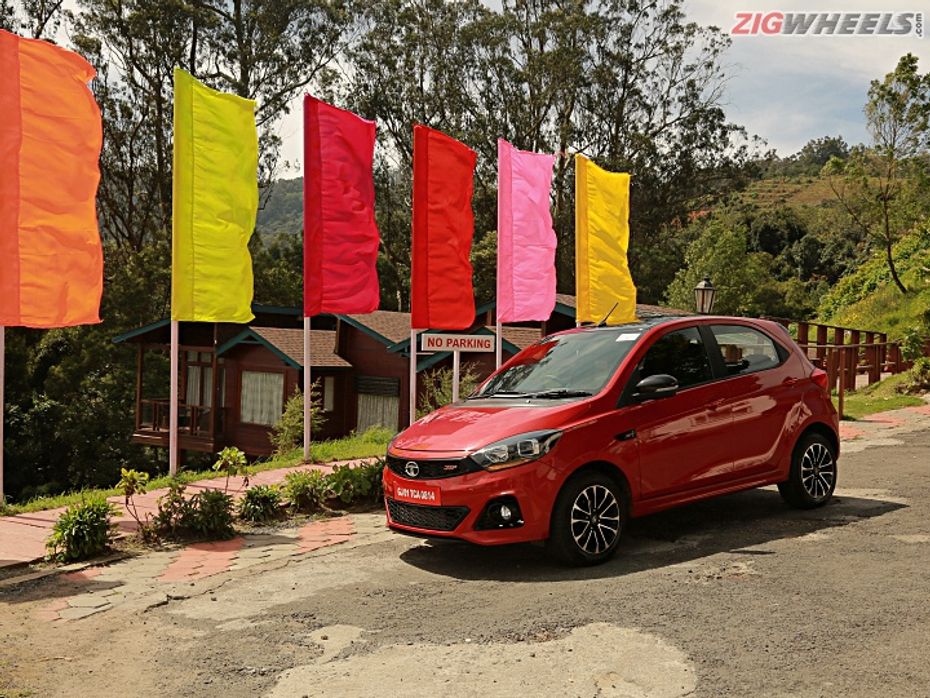
But get around to the twisties and you can virtually see the horns protrude from their roofs. Both cars corner absolutely flat. The steering weighs up nicely as the going gets faster. The precision and sharpness of the setup is immaculate. Feedback is aplenty and the slightest of movements send the nose darting in exactly the direction you intend. The Tiago is definitely the livelier of the two in the corners. Its shorter wheelbase makes it agile and extremely flickable. It constantly feels on edge and eggs you on to push it into corner after corner as we found out on the winding roads of Anaikatti.
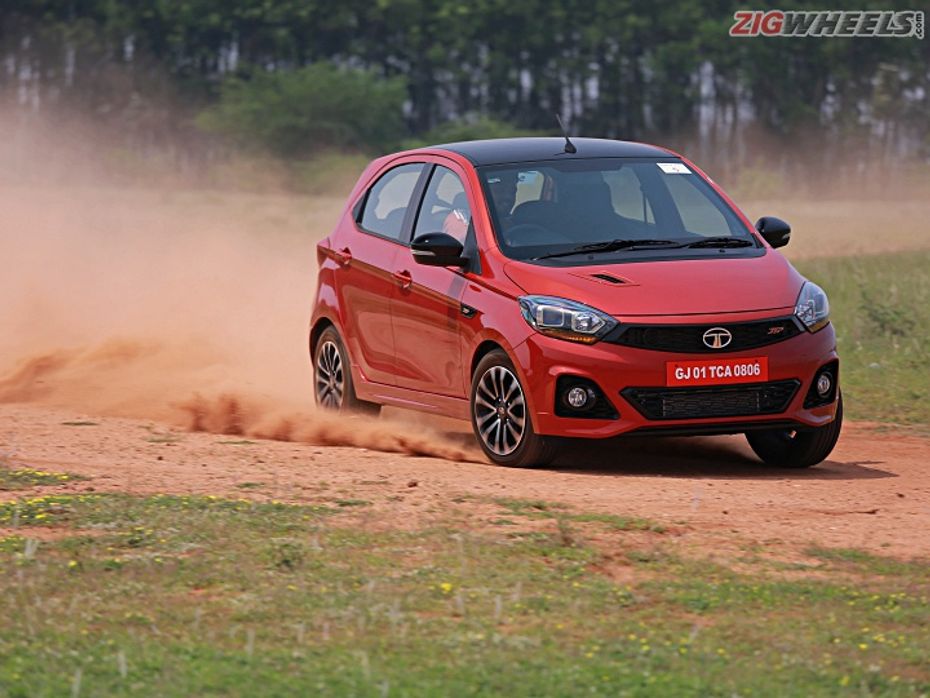
A fast flowing right, into a faster uphill left, immediately into a hard braking sharp right and a downhill hairpin, and the Tiago never once felt out of breath or out of line. It just sticks. The brakes are superb in terms of feel and bite. Wider tyres do help reduce the braking distances, but is the sheer precision that takes the cake. You know exactly how much pedal you need to dial in. Speaking of the tyres, we had the Apollo Alnac 4G specially developed for these cars. The grip from the tyres is immense and they never run out of grip no matter how hard they are pushed. A word of caution though, they do tend to overheat over a prolonged smile-inducing, corner carving session. It is as this point that the car begins to feel floaty and starts to slip in the corners where it previously stuck like a strip of velcro.

The Tigor, on the other hand, thanks to its longer wheelbase and slightly wider track is the more planted of the two. And though both cars feel quite similar, the Tiago feels more in its element in the sharper bends, while the Tigor is more at home in the fast flowing corners. Both of them though slide equally well and flat. No shoulder rubbing, no being thrown around the cabin and the best bit, by far, is the feeling of control. Even when the cars are sliding, they don’t feel snappy or out of shape. The transition from one slide to the next is smooth and controlled. And that, for sub-Rs 9.0 lakh cars, is saying something.
No dealbreakers
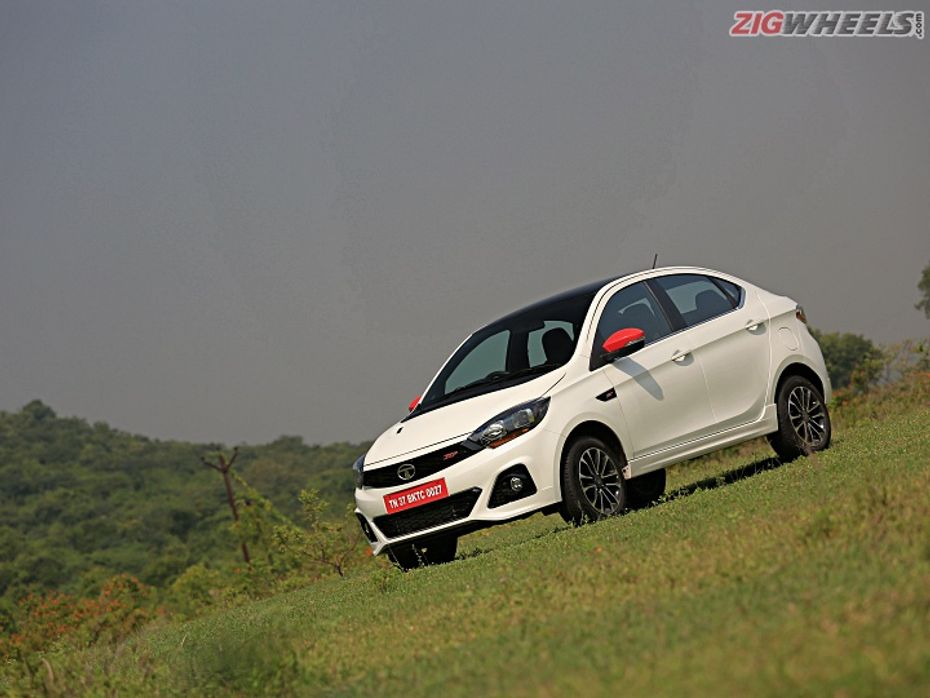
There are no glaring faults with the cars. They are pegged as performance machines and they do the performance bit really well. There are however a few niggles and we are literally nitpicking here because… well, we have to. The driving position is relatively hard to get right. If you like the steering placed low, it will be right in the way of the instrument cluster. Place it too high and it tends to interfere with your vision. The dead pedal too is rather awkwardly placed. And we would’ve liked the throttle response to be a little sharper and quicker as rev matching becomes an issue while attempting to blip the throttle in the corners. That said, we do understand the throttle mapping is the way it is to ensure the throttle isn’t too snappy for new buyers.
Should one buy one?
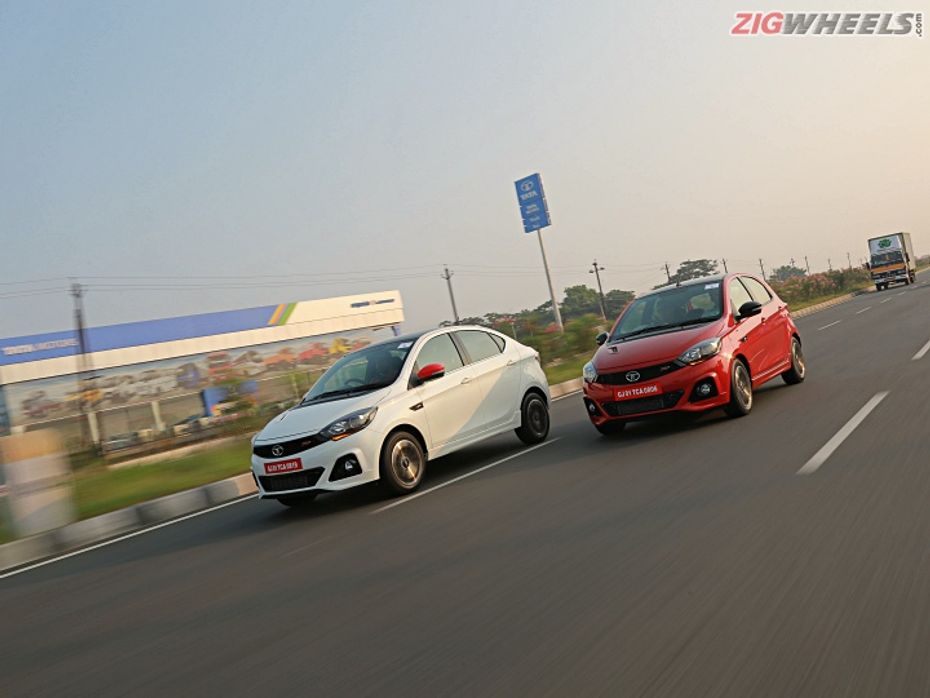
Yes. That’s all that is needed to be said about the cars. But since we provide balanced opinions I am obligated to elaborate. Simply put, if you have been waiting for a compact, performance car that is not overtly complicated, simple in its operation, not exorbitantly priced and provides a base for your bespoke tuner car dreams, it’s time to dust off that cheque book. The JTP twins are purpose-built and purposeful performance cars that are not a pain to drive everyday. Plus, they both employ the same parts (apart from the tyres) as the standard cars, have the same standard service intervals and are entitled to the same warranty
At Rs 6.39 lakh and Rs 7.49 lakh (both prices ex-showroom Delhi), the Tiago and Tigor JTP are the most affordable driver-centric cars in the country today. Since they are tuned and developed by Jayem, enhancing performance further will not be a daunting task as the tuning house will be more than willing to provide ‘solutions’ to customers. The JTP twins have the potential to kickstart an enthusiast-centric car culture that doesn’t see cars as mere commodities. But, are we ready?

Tata’s JTP Duo Gets More Kit And A Price Hike

Tata Tiago JTP, Tigor JTP To Get More Features Soon

Tata Tiago iCNG AMT: Balancing Convenience and Cost
 Tata Tiago
Tata Tiago
India's largest automotive community
 Here Are Some Adrenaline Pumping Experiences From Auto Expo 2025 That You Should Not Miss!
Here Are Some Adrenaline Pumping Experiences From Auto Expo 2025 That You Should Not Miss!
 All You Need To Know About The Surprise Element At Auto Expo 2025: BMW iX1 LWB
All You Need To Know About The Surprise Element At Auto Expo 2025: BMW iX1 LWB
 Hyundai Creta Electric Reaches Dealerships, Here’s A List Of Its Pros And Cons Before You Check It Out!
Hyundai Creta Electric Reaches Dealerships, Here’s A List Of Its Pros And Cons Before You Check It Out!
 MG Showcases A PHEV At Auto Expo 2025: The MG HS PHEV
MG Showcases A PHEV At Auto Expo 2025: The MG HS PHEV
 Tata Punch
Rs. 5.99 Lakh
Tata Punch
Rs. 5.99 Lakh
 Tata Nexon
Rs. 7.99 Lakh
Tata Nexon
Rs. 7.99 Lakh
 Tata Curvv
Rs. 9.99 Lakh
Tata Curvv
Rs. 9.99 Lakh
 Tata Harrier
Rs. 14.99 Lakh
Tata Harrier
Rs. 14.99 Lakh
 Tata Tiago
Rs. 4.99 Lakh
Tata Tiago
Rs. 4.99 Lakh
 Maruti Swift
Rs. 6.49 Lakh
Maruti Swift
Rs. 6.49 Lakh
 Maruti Baleno
Rs. 6.66 Lakh
Maruti Baleno
Rs. 6.66 Lakh
 Maruti Wagon R
Rs. 5.54 Lakh
Maruti Wagon R
Rs. 5.54 Lakh
 Tata Tiago
Rs. 4.99 Lakh
Tata Tiago
Rs. 4.99 Lakh
 Maruti Alto K10
Rs. 3.99 Lakh
Maruti Alto K10
Rs. 3.99 Lakh